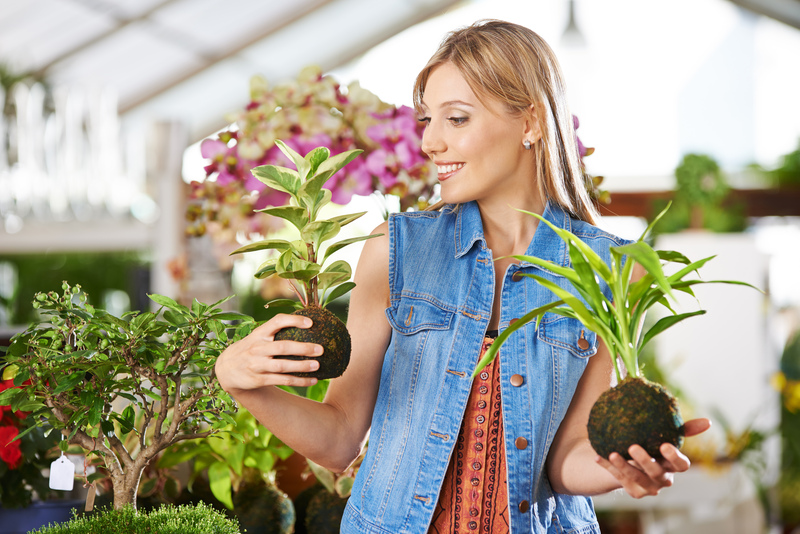Gardening Harmoniously with Your Furry Friends: A Guide to Pet-Safe Green Spaces
Imagine stepping into your backyard - vibrant blooms, lush foliage, and the sound of your furry friends joyfully exploring nature. Creating a pet-friendly garden is a rewarding goal for any animal lover and plant enthusiast. However, merging the worlds of horticulture and pets requires a thoughtful approach. This comprehensive guide will help you garden harmoniously with your pets, ensuring safety, beauty, and happiness for all.
Why Pet-Friendly Gardening Matters
Our beloved pets are part of the family, sharing our homes and outdoor spaces. Traditional gardens may incorporate plants and materials that can be hazardous to animals, including toxic flora, sharp mulch, or unsafe pest control. Gardening with pets in mind is not only about avoiding risks but also fostering an environment where your dogs, cats, or other companions can thrive, play, and relax.
Main Benefits of Gardening with Your Pets
- Healthier Environment: Reduces your pets' exposure to toxic chemicals and plants.
- Happier Pets: Offers safe zones for playing, digging, and basking in the sun.
- Stronger Bond: Involvement in outdoor activities strengthens your relationship with your pets.
- Natural Pest Control: Certain pet behaviors, like digging, can help manage soil insects when guided properly.
- Aesthetic Appeal: A well-designed, pet-friendly garden is beautiful and functional.

Designing a Safe and Enjoyable Pet-Friendly Garden
Start by analyzing your outdoor space through the eyes (and instincts) of your pets. Consider their safety, preferences, and needs. Creating harmony between flora and fauna means smart design, right plant selection, and ongoing observation.
Step 1: Evaluate Your Garden Layout
- Assess escape risks: Check fences for gaps or loose boards, especially for dogs and small animals.
- Safe zones versus play zones: Allocate areas for digging, running, or lounging - and beds for delicate plants.
- Establish pet pathways: Dogs tend to patrol perimeters, while cats love shaded hideouts. Incorporate natural paths or stepping stones.
- Water sources: Design pet-safe water features, like shallow fountains or bowls that offer fresh drinking water and play opportunities.
Step 2: Choose Pet-Safe Plants and Materials
Avoid Toxic Plants:- Lilies (toxic to cats)
- Foxglove
- Oleander
- Sago Palm
- Aloe Vera (can upset dogs and cats if ingested)
- Azaleas and Rhododendrons
Refer to the ASPCA's Toxic and Non-Toxic Plant List before purchasing any plant. Even small exposures can be dangerous.
Opt for Pet-Friendly Choices:- Sunflowers
- Snapdragons
- Spider plants
- Rosemary and Basil
- Marigolds
- Catnip (for your feline friends)
- Bamboo
These options not only liven up your garden but are safe even if nibbled or trampled.
Step 3: Pet-Smart Ground Cover and Mulch
- Avoid cocoa mulch--it contains theobromine, toxic to dogs.
- Use bark, shredded pine, or cedar mulch (provided your pets don't chew or eat the mulch).
- Grass alternatives like clover or creeping thyme are more resilient to dog urine and heavy traffic.
- Consider gravel or smooth pebbles for paths, but ensure they aren't small enough to be swallowed.
Harmonizing the Needs of Pets and Plants
Redirect Digging and Chewing Behaviors
Dogs and some cats may dig out of instinct, curiosity, or boredom. Channel this natural behavior by:
- Designating a specific sand or dirt pit for digging and hiding treats or toys there.
- Bordering delicate plant beds with decorative fences, temporarily or permanently.
- Using sturdy containers or raised beds for more fragile crops and flowers.
Protecting Your Plants from Mischief
- Install gentle deterrents, such as motion-activated sprinklers to keep pets away from certain areas.
- Use non-toxic repellents like citrus peels or vinegar sprays around beds (always ensure these are safe for your specific animals).
- Choose robust, resilient plants near pet play areas, saving exotics or fragile blooms for protected zones.
- Compromise: Allow a corner of your garden to become a "wild" zone for your pets to explore and play freely.
Organic and Safe Pest Management Strategies
Traditional pest control products can be hazardous for dogs, cats, rabbits, and other pets. Instead, implement organic, non-toxic solutions to keep your garden pest-free:
- Hand-picking pests like caterpillars or beetles.
- Barriers: Use mesh, collars, or row covers to protect young plants.
- Beneficial insects: Ladybugs and praying mantises keep pest populations in check.
- Diatomaceous earth: Use food-grade only, and avoid spreading when pets are present as inhalation can be an irritant.
- Homemade sprays: Try mixtures of water, mild soap, and neem oil on infested leaves (careful with cats, as some essential oils can be toxic).
Safe Fertilizers and Compost
- Avoid products containing blood meal, bone meal, or fish meal -- their scent can attract pets, and ingestion may cause digestive distress.
- Opt for natural composts and manure, enclosed in bins or turned under the soil to prevent pets from rooting through them.
- Keep compost piles and fertilizer containers out of reach of curious pets, especially dogs.
Balancing Exercise, Enrichment, and Safety
Encouraging Healthy Outdoor Activity
A furry friend friendly garden doubles as the perfect exercise yard. Incorporate pet features like:
- Agility tunnels or ramps – combine play and physical activity for dogs.
- Cat perches or safe climbing structures – let your cats survey their kingdom.
- Shaded nooks for cooling down during sunny days.
- Sturdy outdoor toys, like ropes or balls, for independent entertainment.
- Fresh water bowls or shallow ponds, which encourage hydration and safe exploration.
Providing Rest and Refuge
All pets need places to rest, especially during hot afternoons or after an enthusiastic play session. Designate zones for cozying up:
- Use dense shrubs or small trees to create shaded hideaways.
- Place weatherproof pet beds or mats in quiet, sheltered locations.
- For multi-pet homes, ensure several rest areas to prevent territorial disputes.
Seasonal Considerations for Pet Gardening
- Summer: Ensure ample shade and plenty of cool water.
- Fall: Rake fallen leaves which could harbor mold, especially if your pets like to munch on them.
- Winter: Avoid chemical de-icers and secure boundaries, as pets may become lost in snow or fog.
- Spring: Be cautious of fertilizers, early bulbs, and spike-shaped mulch that can injure curious paws.
Teaching Pets Garden Manners
Training is crucial for both pet happiness and garden preservation:
- Start by supervising your pet closely in the garden, offering gentle redirection if they dig or chew.
- Reward desired behaviors, such as remaining on paths or using designated digging zones, with treats or praise.
- Consistent boundaries help reduce stress for both pets and plants.
- If possible, provide alternative enrichment indoors when outdoor conditions are unsafe (heatwaves, pesticide treatment in neighboring yards, etc.).
Special Considerations for Different Pets
Gardening with Dogs
- Favor tough, resilient ground cover and plants as some breeds are more energetic diggers.
- Border sensitive beds with low fences or natural barriers.
- Watch for signs of plant consumption and address immediately - some dogs are notorious for eating anything!
Gardening with Cats
- Offer cat grass, catnip, and tall perches or posts for scratching.
- Use secure fencing or "catios" for safe outdoor exploration.
- Monitor for attempts to use garden beds as litter areas; offer sandboxes or soft mulch in out-of-the-way corners as alternatives.
Gardening with Rabbits & Small Mammals
- Fencing should be tight and sunk below the soil surface to prevent tunneling escapes.
- Choose edible flowers and herbs for bunny snacking--such as nasturtiums, parsley, mint, or dandelion greens.
- Ensure no access to poisonous wild plants or chemical treatments.
Common Gardening Challenges with Pets
- Trampled seedlings: Protect with wire cages or cloches until plants are established.
- Brown patches in lawns: Dilute dog urine immediately by hosing down affected areas or encourage pets to use mulch or gravel zones.
- Excavated flower beds: Bury chicken wire an inch beneath the soil in key areas to deter further digging.
- Chewed garden hoses/tools: Store all equipment securely after use.

Resources for Pet and Garden Safety
Conclusion: Cultivating Harmony in Your Pet-Friendly Garden
With a balanced approach, you can enjoy the beauty of a thriving garden and the companionship of your furry friends without compromise. A harmonious pet-friendly garden is a living space that nurtures, inspires, and connects all members of your family--humans and animals alike.
As you embark on your journey in gardening harmoniously with pets, remember to adapt your strategies over time, observe your animals' preferences, and always put safety first. The resulting outdoor sanctuary will reward you and your pets season after season with joy, health, and natural beauty.
Happy gardening--to you, and your furry friends!


